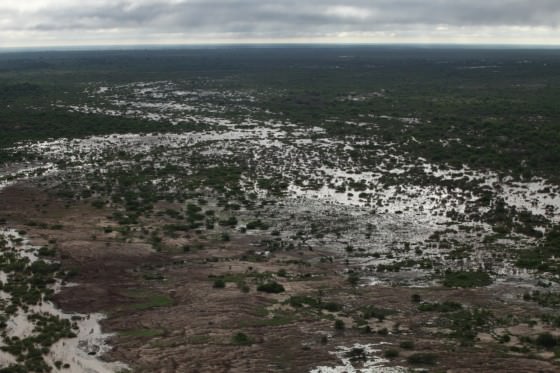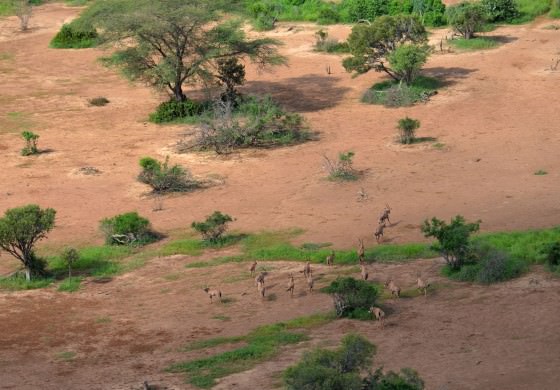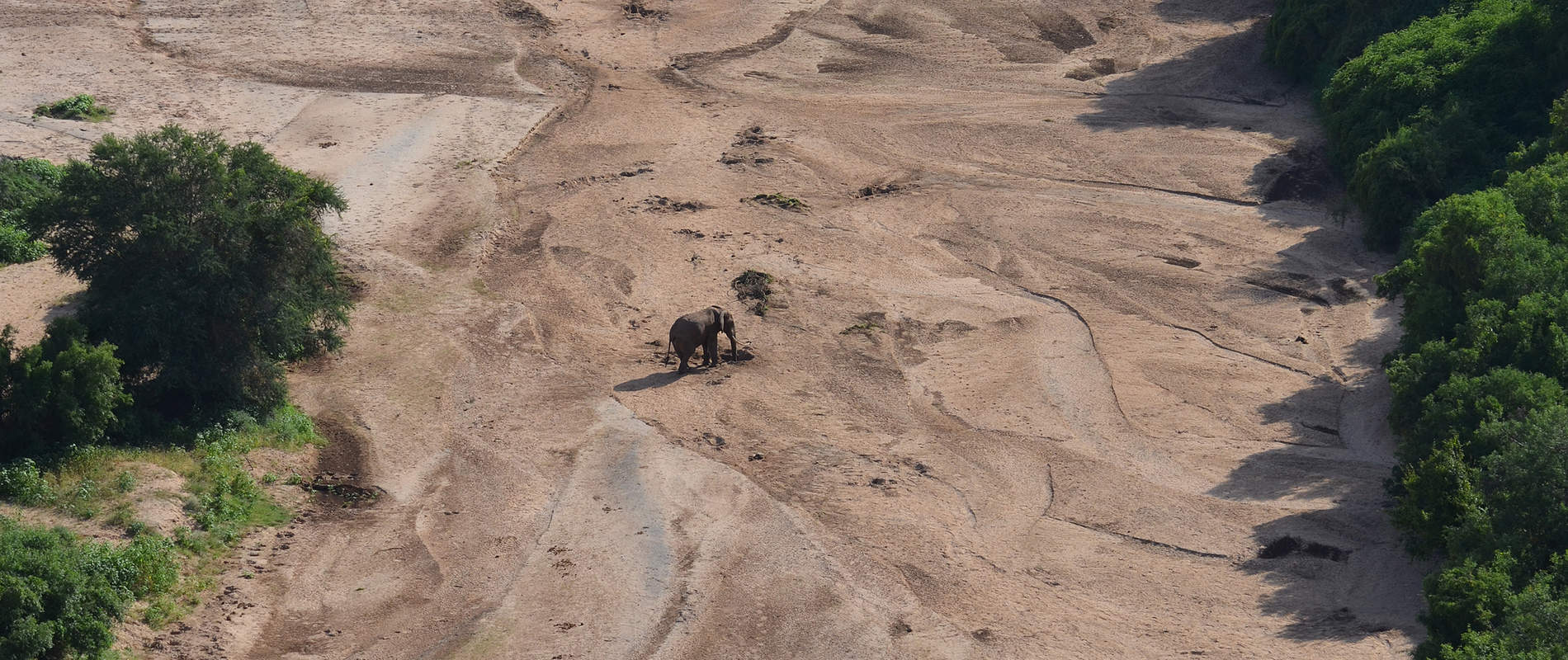For most of the year, the Tiva River appears dry and lifeless.
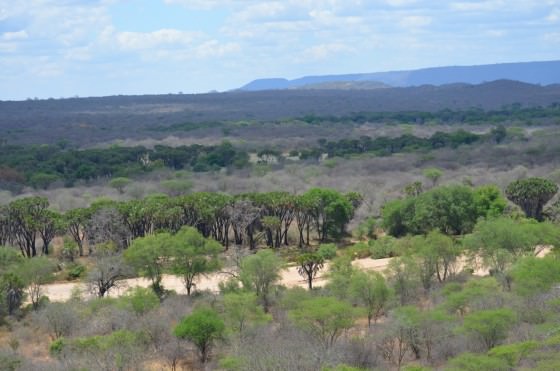
It is a seasonal river and flows for only a few weeks per annum. On the surface it is long and winding, its source somewhere north of Ikutha, outside the Park's boundary. Filled with brilliant, white sand, it forms a stunning contrast against the dark green acacia and doum palm forests that line its edges.
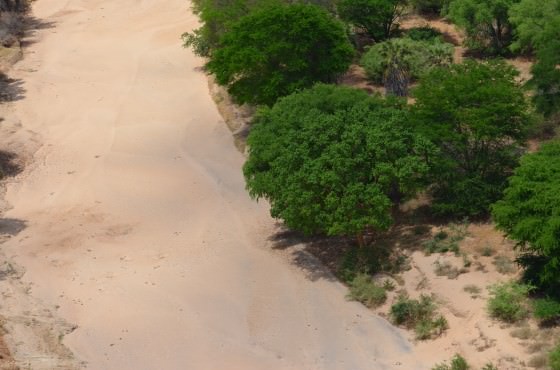
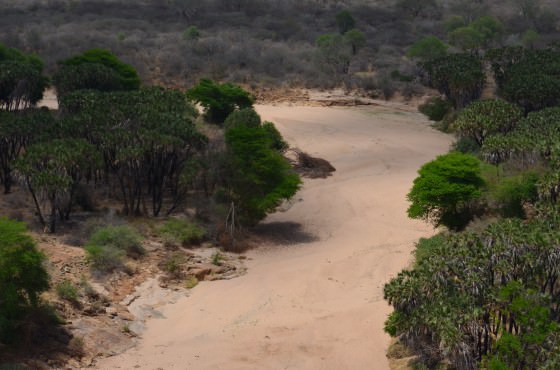

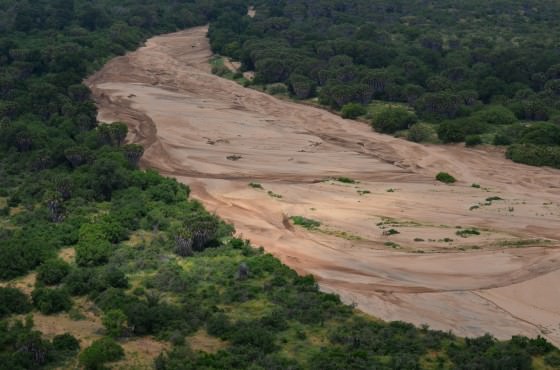
Under the surface, even in the height of the dry season, water continues to seep through miles upon miles of sand as it creeps steadily towards the eastern border of Tsavo East. Occasionally, the water is pushed to the surface by volcanic, rock dams that lie under the riverbed and create springs, which provide life-giving water long after the waterholes have dried up.
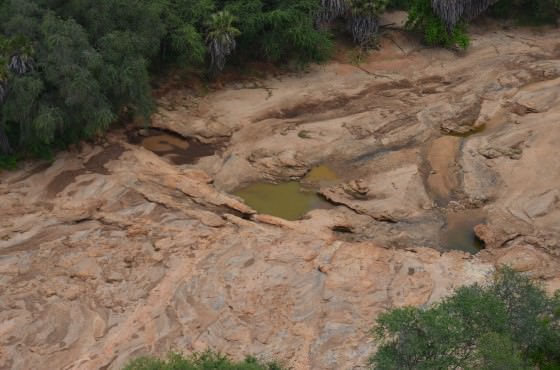
In one such spring, a massive crocodile swims alone, surviving on fish and perhaps the odd antelope that ventures too close. It is unclear how the crocodile came to be there, but they have been known to travel many miles over land and even the late David Sheldrick spoke of seeing crocodiles walking vast distances when he was warden of Tsavo East. However, a more popular theory is that someone from Nairobi released an overgrown pet that then grew into the leviathan now guarding the spring.
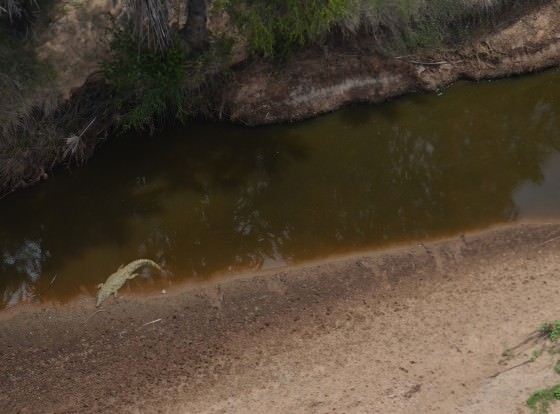
Elsewhere along the Tiva, elephants act as nature's water engineers, digging holes in the river's sand bed that slowly fill up with filtered water. After they have taken their fill, other animals will take advantage of their handiwork, and in the past when both elephants and rhino populations were much healthier, it was possible to watch many of each quenching themselves from the Tiva at one time.
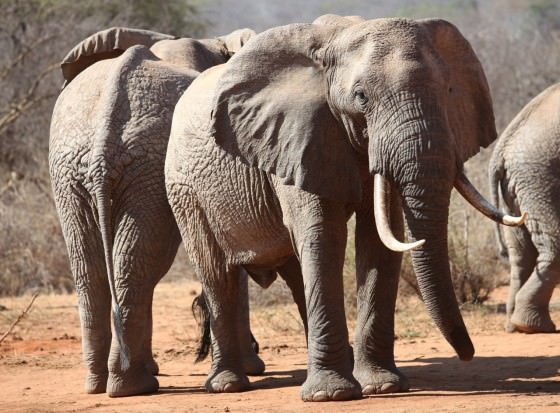
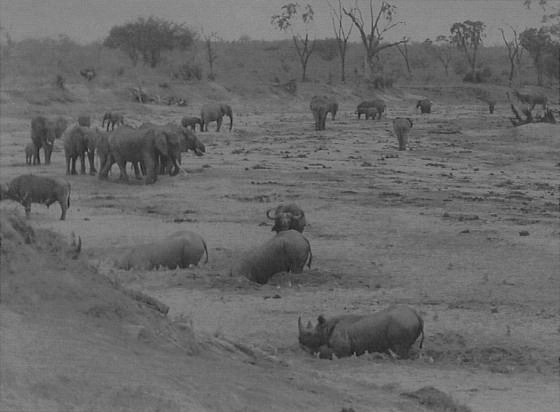
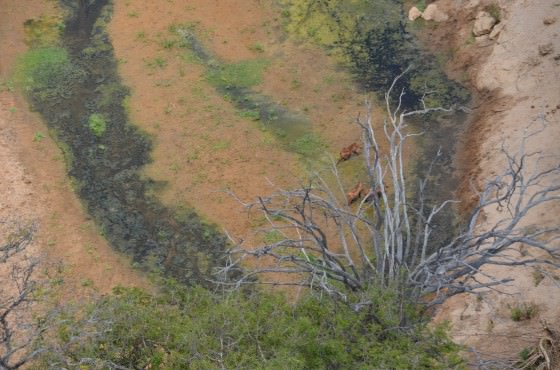
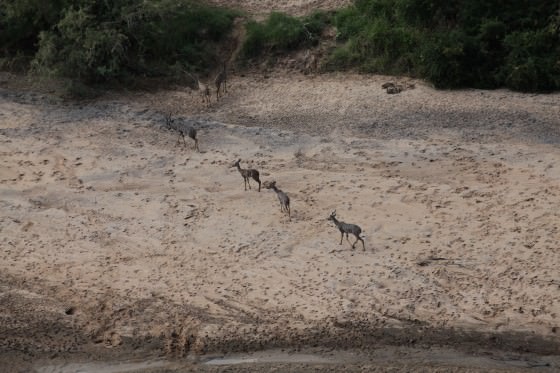
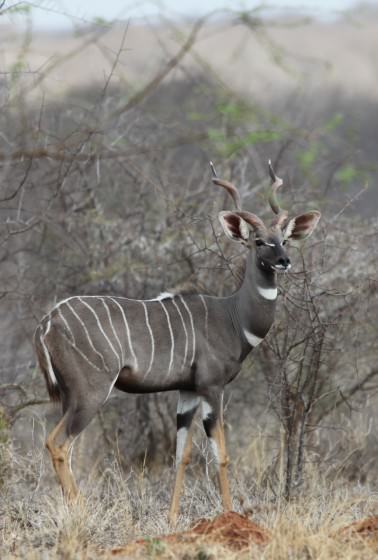
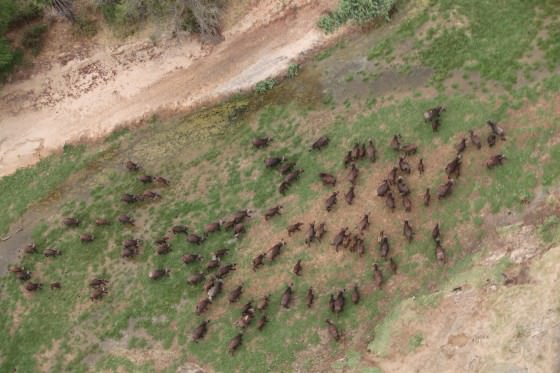
Inside the Park, the Tiva River flows south along the edge of the Yatta Plateau until it suddenly turns east, cutting through the flat, barren landscape that characterises the North of Tsavo. Generally, it winds around long, lazy bends, but in one place it drops over a set of falls known as Bisadi.
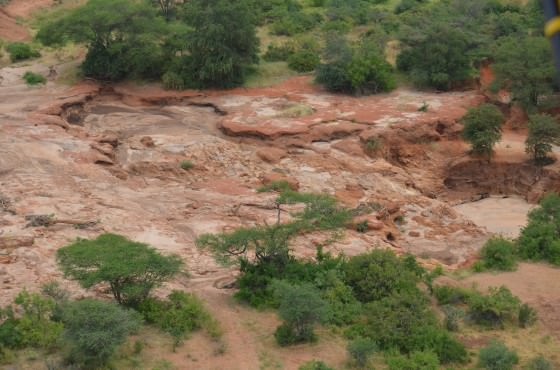
Towards the edge of the Park the river abruptly dissipates into an expansive, green delta where animals congregate to graze on fresh vegetation. The area surrounding the delta has also been home to nomadic, Orma pastoralists since antiquity. In an old stretch of the river that lies beyond where much of the current river is unloaded into the delta, they follow the elephants' example and dig hundreds of deep pits in the sand known locally as Ndiandaza wells. From these wells they are able to keep thousands of cattle, sheep, goats, donkeys and camels alive year round.
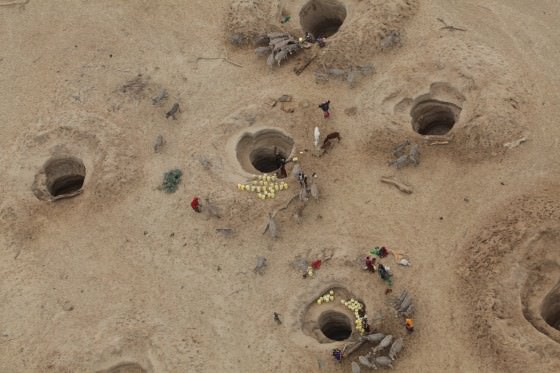
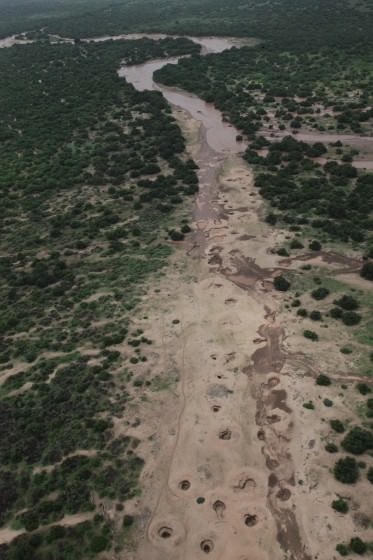
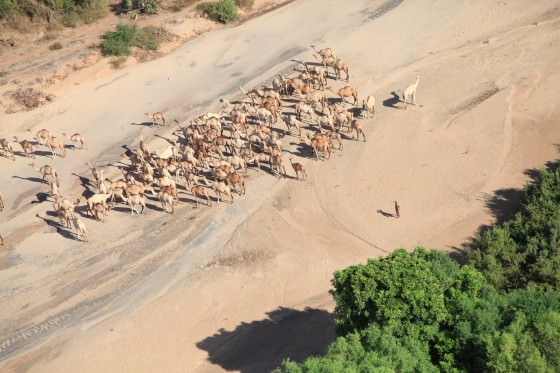
The Orma's right to graze their livestock in the Park is a point of contention with the Kenya Wildlife Service, however, because even though the area has provided grazing for this very traditional group of people for many years, they are technically trespassing on government protected land, and it is feared that they might harbour ivory poachers posing as innocent herders.

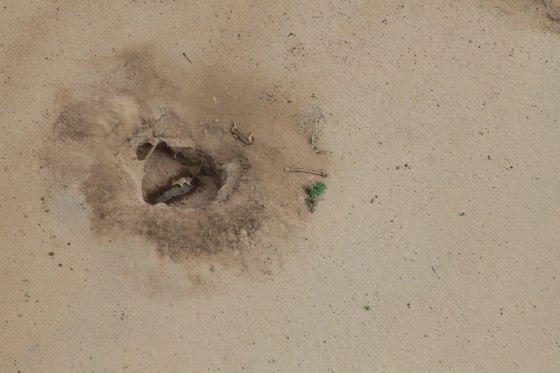
The Tiva never actually reaches the sea, but it serves a vital purpose in the North of Tsavo as the only source of water for hundreds of miles. It may be a seasonal river, but it sustains life throughout the year and through the harshest of droughts.
